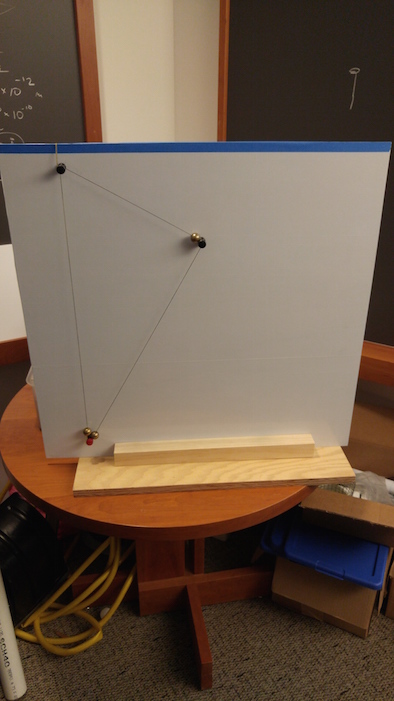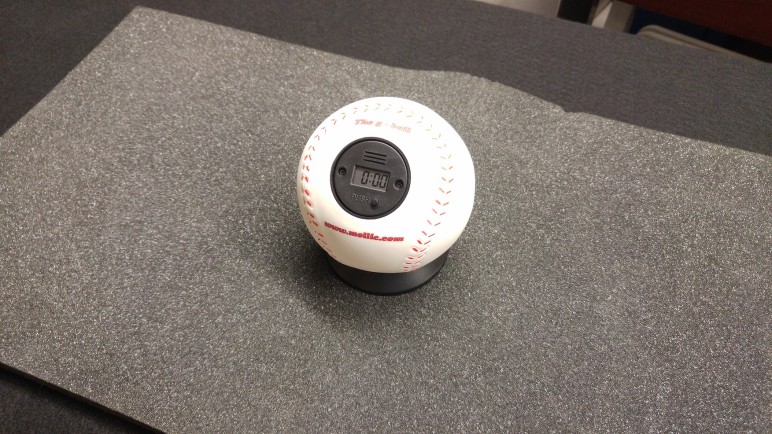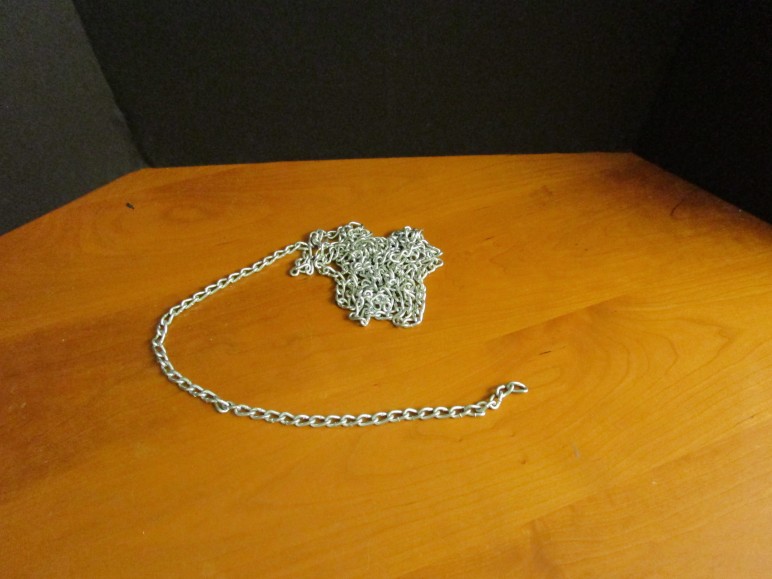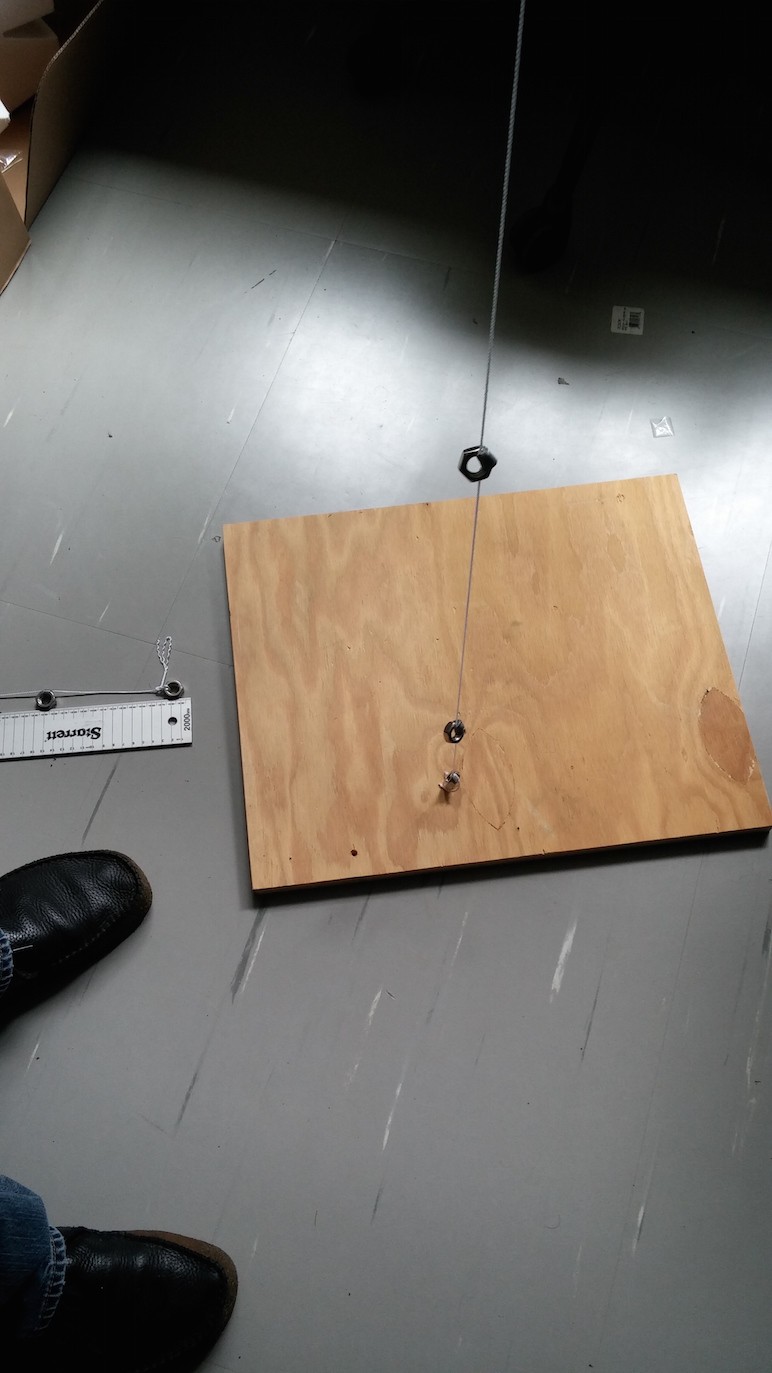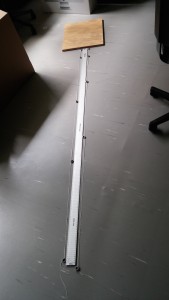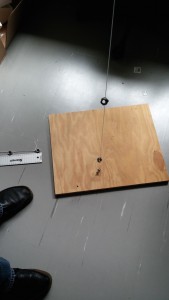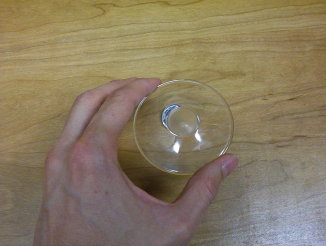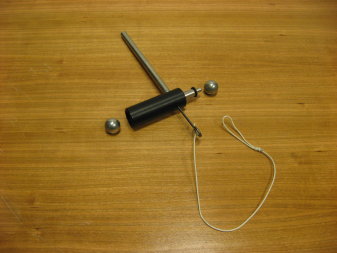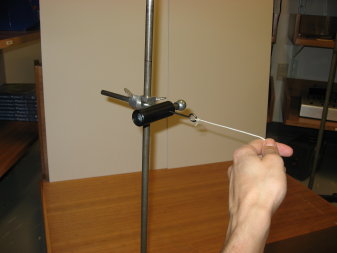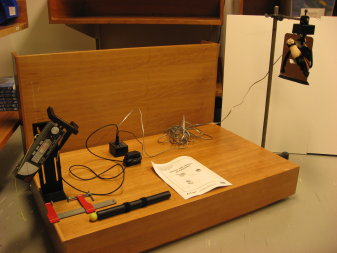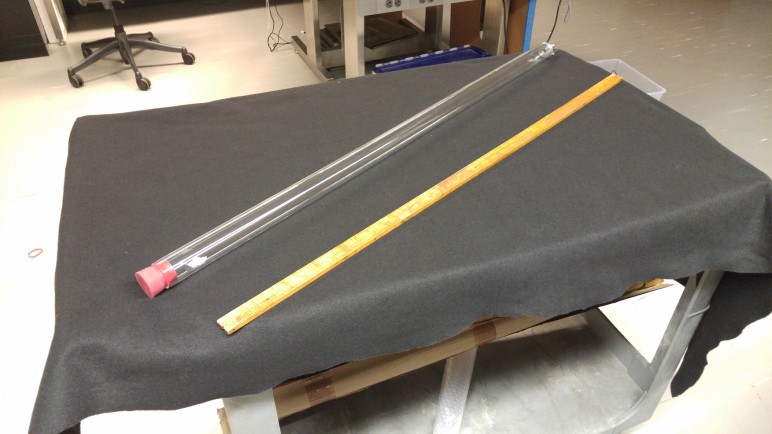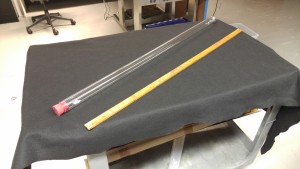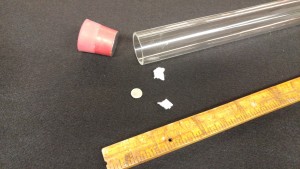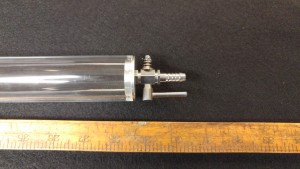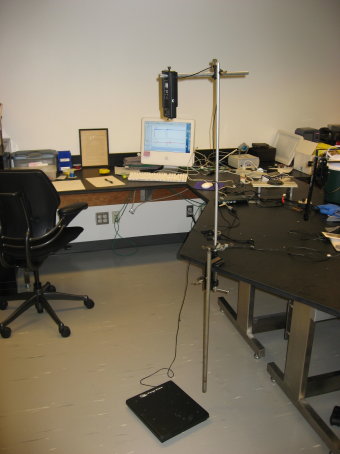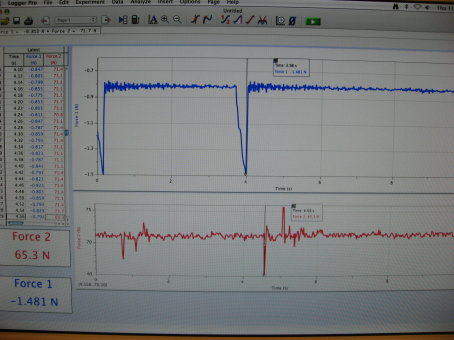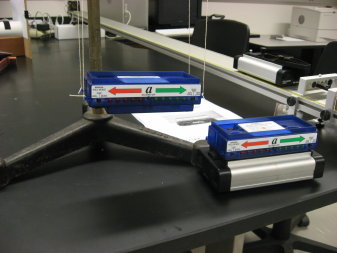- Right triangle shown above is made of taut string.
- Each side contains a brass ball that is free to slide along the string segment.
- Time of descent, from top to bottom of segment, is equivalent for each of the three balls.
- This is true for any right triangle, with vertical hypotenuse, as the side lengths are reduced by the same factor as the rate of acceleration.
- String is mounted on white-board material so instructor can derive equations alongside triangle using a dry erase marker.
- Located in L02, section B3
